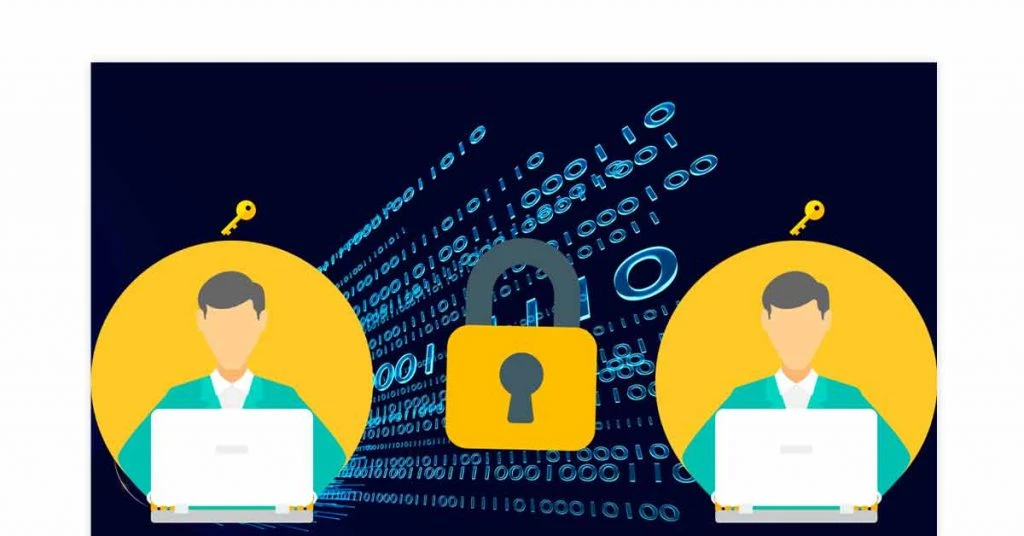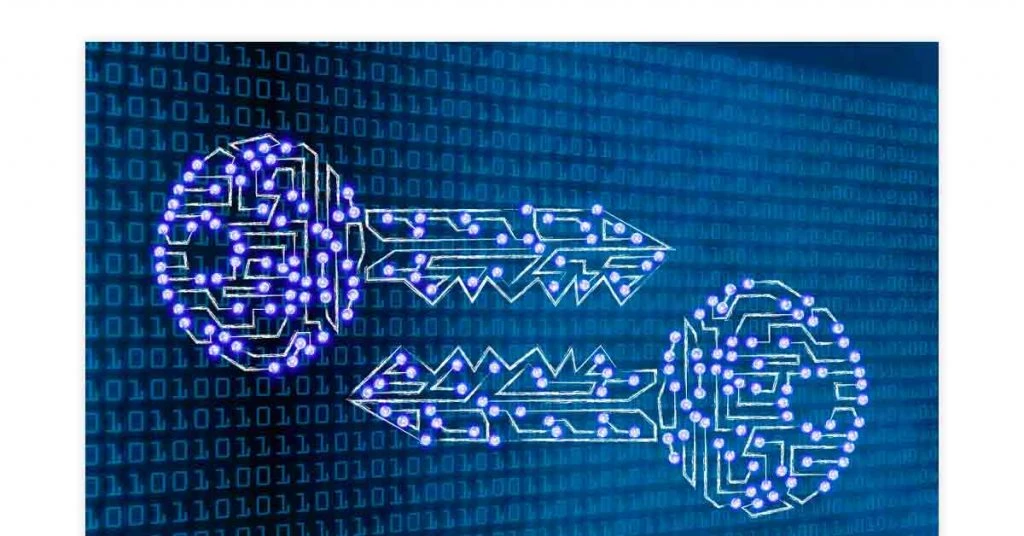A digital signature is a public-key primitive of message authentication. A digital signature is technically a method of tying a person or entity to digital data. The receiver, as well as any third party, can independently verify this binding. It is a cryptographic value computed from data and a secret key that only the signer has access to.
In a real-world scenario, the receiver of a message requires assurance that the message belongs to a specific sender and that he will not be able to deny the message’s existence. This requirement is critical in commercial applications since the chances of data exchange disagreement are quite high. This is where cryptographic signature plays a crucial role.
Table of Contents
What Is Digital Signature in Cryptography?
Digital signature uses public key cryptography to validate and ensure authenticity and integrity of the signed information. Let’s have a look at how digital signature uses public key cryptography for signing and verification operations.
Authentication: When a verifier validates a digital signature using sender’s public key, he is confident that the signature is of the sender with associated secret private key.
Data Integrity: If an attacker edits the data, the digital signature verification at the receiver end fails. The hash of updated data and the verification algorithm’s result will not match. As a result, the receiver can securely reject the message.
Non-repudiation: Because the signature key is known only to the signer, he can create a unique signature on a given data. In the event of a future disagreement, the receiver might offer the data and digital signature to a third party as evidence.
Suggested Read: How to Create Digital Signature Electronically in 6 Steps
What Is Digital Signature Standard in Cryptography?
A digital signature is a technique of validating digital data from a trusted source. The Digital Signature Standard (DSS) is a Federal Information Processing Standard (FIPS) that specifies procedures for generating digital signatures using the Secure Hash Algorithm (SHA) for electronic document authentication. DSS simply gives us the ability to digitally sign documents, using encryption or key exchange techniques.


Sender Side: In the DSS approach, a hash code is created from the message, and the signature function is given the following inputs —
- The hash code
- For that particular signature, the random number ‘k’ was created.
- The sender’s private key, i.e. PR (a).
- A global public key (a set of parameters for communicating principles)
The function will return an output signature with two components –’s’ and ‘r’. As a result, the receiver receives the original message together with the signature.
Suggested Read: Difference Between Digital Signature and Electronic Signature
Receiver End: The sender’s identity is verified at the receiver end. The sent message’s hash code is created. There is a verification function that accepts the following parameters as inputs:
- The hash code that the receiver generates
- The letters ‘s’ and ‘r’ as signature components
- The sender’s public key
- The global public key
The signature component ‘r’ is compared to the result of the verification function. If the sent signature is legitimate, both values will match since only the sender can generate a valid signature using his or her private key.
How Digital Signature Works in Cryptography?


Digital signature works in cryptography by utilizing these components:
Hash: A hash is a fixed-length string of letter and numbers produced by a mathematical procedure and a large file. SHA-1 (Secure Hash Algorithm-1), SHA-2 and SHA-256 (Secure Hashing Algorithm-2 series, and MD5 (Message Digest 5) are some of the most prominent hashing algorithms in use today.
Asymmetric encryption: Asymmetric encryption (also called public-key cryptography) happens to be a cryptographic approach that employs a key pair scheme. While the data can be encrypted using only one key, known as the public key, it can be decrypted using the other key, known as the private key.
Public key infrastructure (PKI): It includes the standards, rules, systems, and people to facilitate the sharing of public keys and to validate the identity of entities or individuals.
Digital certificates: Digital certificates are similar to driver’s licenses as they are used to identify the person who holds the certificate. A CA digitally signs digital certificates, which contain the individual’s or organization’s public key. The certificate might also include information about the organization, the individual, and the CA.
Certificate authority (CA): The certificate authority is a third party that verifies a person’s identity. It does so by either generating a public/private key pair for them or correlates an existing key provided by that person. Once a person’s identification is verified, the CA issues a digital certificate. The digital certificate can be used to validate that person by public key.
PGP/OpenPGP: PGP (Pretty Good Privacy), also known as OpenPGP, is used as a PKI alternative. PGP helps users “trust” other users by issuing signature certificates for people whose identities are verified.
Suggested Read: Importance of Digital Signature in eCommerce Industry
The Role of Digital Signature in Cryptography and Network Security
A mathematical way to verifying the authenticity and integrity of any communication medium, document, or software is known as digital signature encryption. It helps us to authenticate the message content and verify the author’s name, date, and time of signatures.
The digital signature is designed to overcome the problem of tampering and impersonation in digital communications by providing significantly more inherent protection.
Signatures must be verifiable. If a dispute arises over who signed a document, a third party should be able to resolve the matter fairly without requiring access to the signer’s confidential information.
The RSA signature scheme is still one of the most useful and versatile strategies accessible today. Many digital signature techniques have emerged as a result of subsequent studies.
Both technology and the law are involved in computer-based corporate information authentication. It also encourages collaboration among persons with various professional backgrounds and areas of expertise. As it stands, digital signatures are more useful for legal purposes, as compared to electronic signatures.
Suggested Read: List of Best Open Source & Free Digital Signature Software
Digital Signature in Cryptography Examples
Following are some of the examples of well-known digital signature algorithms:
- DSA
- ECDSA
- EdDSA
- RSA signatures
- ElGamal signatures
- Schnorr signatures
Conclusion
To achieve confidentiality in digital conversations, it is preferable to exchange encrypted messages rather than plaintext messages. A sender’s public (encryption) key is available in the open domain, thus anyone can impersonate him and send an encrypted message to the receiver. As a result, users that utilize PKC for encryption must look for digital signatures to ensure message authenticity and non-repudiation.
Suggested Read: Digital Signature Certificate (DSC): Benefits, Usage & How to Get DSC
FAQs
- What are the requirements of digital signature in cryptography?
To generate the digital signature, the hashed value of the original message is encrypted with the sender's secret key. CA (Certifying Authority) generates it through four steps: Key generation, Registration, Verification and Creation. These steps are required for verifying the authenticity of the sender, document integrity, and non-repudiation.
- What is digital signature algorithm?
For digital signatures, the Digital Signatures Algorithm is a Federal Information Processing Standard. Digital Signature Algorithm has three advantages – Verification of Message, Authentication and Integrity, and Non-repudiation.
- What is digital signature standard?
The Digital Signature Standard is a Federal Information Processing Standard that describes a set of methods for creating digital signatures.
- What is the use of digital signature in cryptography?
A digital signature is a cryptographic output that can be used to validate data's authenticity. You can follow the signing operation and create a signature on a raw data with a signing key. Or, you can opt for the verification operation where signature validation can be done by anyone who has limited knowledge about the signing key.
- What are the types of digital signature in cryptography?
Three forms of digital signatures are recognized by eIDAS:
1. Simple or basic electronic signatures (SES)
2. Advanced electronic or digital signatures(AES)
3. Qualified advanced electronic or digital signatures (QES) - What is digital signature process in cryptography?
In a digital signature process, the signature generated by both the fixed message and private key must be authenticated by the public key that accompanies it. The user's signature cannot be duplicated without access to their private key using these cryptographic procedures.
- Digital signatures are based on which key encryption?
Public-key cryptography or asymmetric cryptography is used to create keys in digital signatures. Any public key algorithm like Rivest-Shamir-Adleman generates a private and a public key, leading to a mathematically linked key pair.
- Digital signature is applicable for which cryptosystem?
The digital signature is applicable for asymmetric-key cryptography.
Related Categories: Digital Signature Software | Productivity Software | Utility Software | PDF Software | Document Management Software






























